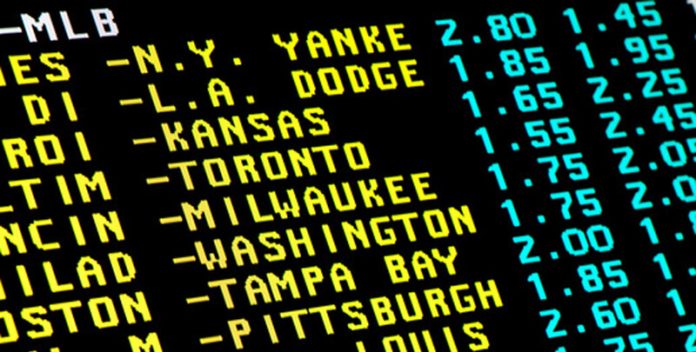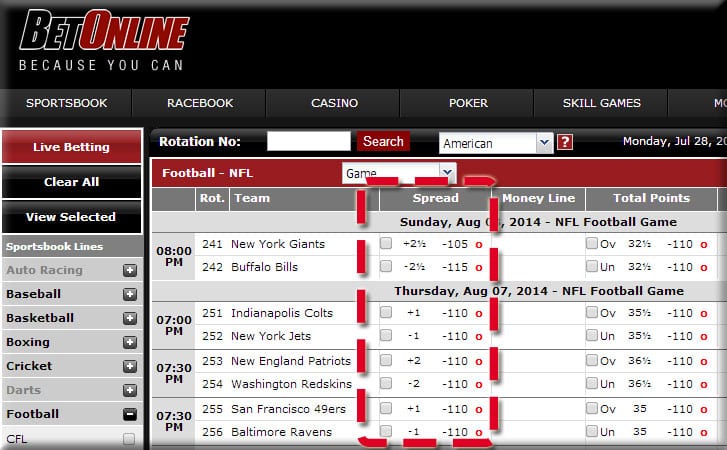Explanation Of Betting Odds
The evolution of exchange betting has revolutionised market-making to such a degree that even the biggest bookmaker names no longer employ professional odds setters.

How did odds making start?
Betting Odds Explained – A Beginner’s Guide to Gambling Using Betting Odds to Calculate Probability. Whenever you see two numbers separated by a trailing slash, i.e. Using Betting Odds to Calculate Winnings. Betting odds allow you to calculate how much money you will win if you make. Sports betting lines on FanDuel Sportsbook are presented in what is called the 'American. In sports betting terms, odds basically serve two purposes. First, they are used to calculate the payouts of winning wagers. Every time you place a bet with a bookmaker, you’ll be offered odds at the time, which impact how much you can win. The higher they are, the more you stand to win relative to your stake.
As touched on in our Brief History of Betting blog, the concept of calculating the likely chance of a winner in a horse race, and converting that into bookmaker odds, was devised by one Harry Ogden.
Operating on Newmarket Heath towards the end of the 18th century, Ogden was the first bookmaker to take betting beyond its strikingly crude roots. Most early bets were simply a way of settling an argument over whether a named event would come to pass or not.
Not only did Ogden begin the process of making a book, he also understood that he had to save a percentage of his takings for his own purse. In order to achieve this, he slightly adjusted prices in his favour. It worked: if somebody won a bet and got paid out at odds of 4/1 they were unlikely to complain, especially at this early stage, that they had not been paid at the true probability of 5/1.
So already, within Ogden’s lifetime we witnessed the evolution of a book featuring a range of prices as well as the concept of what is now known as an “overround”.
What is an overround book?
A perfect book, without factoring in a margin for the bookie, would mean the implied probability of all outcomes would add up to 100%. However, bookies use the concept of overround to stretch this probability greater than 100% – which then becomes their profit.
Here’s an overround example from a tennis match:
Now, have you ever considered why bookmakers like to encourage accumulators in sports like football where punters enjoy backing multiple selections in a single bet?
Well it’s simple: if a bookmaker has an overround of 105% on each of five football matches, a punter placing a bet in all five of those matches is betting against an overround 125% because the extra 5% is factored in each time.

The growth of betting and odds compiling
By the 1950s the big firms that covered the length and breadth of the country betting on horses and greyhounds were already employing odds-makers to help them compile what was known as the “tissue” for each race.
This was effectively the first show of prices. Bookmakers would certainly collude to some degree to check their assessments of the market were not wildly out of place but by and large they were happy to trust their instincts.
The prices were not static: they moved to respond to market forces after the first show was published on the boards.
What did a bookie do if he felt liabilities were in danger of getting too big on a particular horse? All he had to do was rub off the displayed price on his chalkboard and put up a less attractive price. He might then balance his book by pushing out the prices of less fancied runners.
The advent of legal betting shops
The golden age of betting was triggered by the 1960 Betting and Gaming Act – a watershed development that allowed betting on racing and greyhounds to take place in licensed shops around the country.
For the first time, punters did not need to be physically at a racecourse or dog track to legally place a bet. There was still an incentive for big-time punters to go racing because if they were betting in shops they had to pay tax.
But bookmakers small and large had to be on the lookout to protect themselves against betting coups in what was now “open season” for big-stakes punters. If, for example, a group of individuals could target multiple betting shops at the same time soon before the start of a race it was hard in the pre-internet age to ensure the price was cut in time.

The Yellow Sam plot of 1975 was a perfect illustration of how a meticulously organised plot could evade the best attempts of the bookies to minimise their exposure.
The 1990s: Multiple sports, multiple platforms
When restrictions were lifted on football betting to unlock a wide range of markets on individual matches, horse racing’s dominance as a sports betting medium was challenged for the first time.
At the same time, firms were opening more and more shops, allowing telephone and online accounts while accessing more and more global television feeds.
This was the decade in which odds-compilers really earned their corn for bookies like Coral, Ladbrokes and William Hill – traditional names with presence on the high-street, at the courses and, bit by bit, on rudimentary web browsers too.
Sports traders and palps

If, for example, you were a graduate with a good degree in maths or economics and you also followed rugby union religiously you could be hired specifically to draw up rugby union markets for one of the big operators.
With so much sport to bet on, and so many new avenues from which to glean useful information, this was also the time that “palps” (bookie slang for palpable errors) were at their most prevalent.
Shrewd punters could sometimes find out if an obscure tennis match or an overseas domestic football game had been rescheduled to an earlier time slot. If the bookies were unaware they could find themselves accepting a bet on an event that had already happened.
How exchanges changed the landscape
The arrival of Betfair into an increasingly cluttered market in 2000 proved a positive intervention in a number of ways, even if some small on-course bookmakers to this day rue the dawn of exchange betting.
Betfair had a huge USP: it was allowing markets to be set by individuals trading on its platforms hours and sometimes days in advance. The prices were not set by individual odds-makers using personal assessment.
Betting Odds Calculator
Over the intervening 20 years, the exchanges have had their ups and downs but for bookmakers they provide two major positives which serve as some sort of compensation for draining them of the business they once did.
Firstly, by using the wisdom of the crowd, exchanges establish robust markets relatively quickly meaning betting companies no longer need to invest so heavily in their own odds-makers.
Secondly, the exchanges provide an easy mechanism for bookmakers to lay off worrying liabilities and can even provide early warning of a potential betting coup attempt.
What is BetConnect’s role in the market?
BetConnect is a hybrid solution that combines many of the strengths of the Betfair model – it is, after all, a peer-to-peer exchange – alongside the reassurance of big bets being matched without restrictions.
Available prices quoted are based on real-time markets provided by a wide range of online bookmakers. The platform gives bettors reassurance that they are getting the best bookie prices while layers know where to head for matched betting opportunities.
Explanation Of Betting Odds In Baseball
BetConnect’s single biggest advantage is its ability to fuse three disparate groups of individuals:
- Professional punters who have grown frustrated by restrictions imposed on them by the bookies
- Recreational players who enjoy backing and laying selections
- The growing community of matched betting enthusiasts
If you think you’re ready to bet on horse racing or any other sport then sign up for a BetConnect account now. BetConnect is the only exchange that lets you back selections at bookie odds with no restrictions, and lay the selections of other account-holders commission-free. Not sure how it works? Read this simple guide.